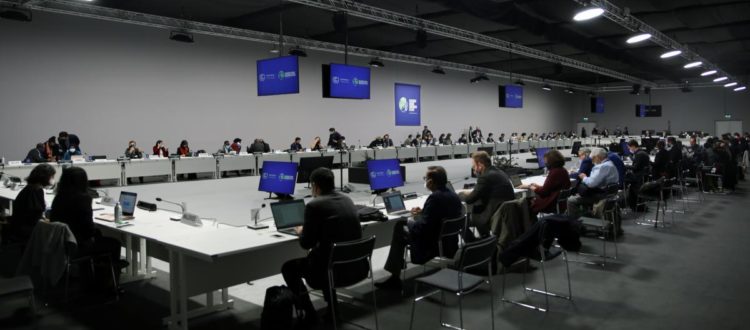INSIDE THE HALLS: ISSUES OF CLIMATE FINANCE
The end of the negotiations is approaching and the nervousness among the negotiating benches is rising in the first drafts the need to arrive at more concrete and credible commitments on the issue of climate finance emerges. Even though one of the three objectives of the Paris Agreement is dedicated to the orientation of compatible financial flows towards a scenario with low greenhouse gas emissions, in the history of climate negotiations this remains one of the commitments often disregarded by the Parties.
The Presidency sees the risk that a failure to agree on this issue could spill over to the other negotiating tables. For this reason and to put pressure on the negotiators, it has been asked to conclude the work by Wednesday (today).
There are still many questions on the table, first which are the flows to be reported as “climate finance”. What appears to be a technicality, however, conceals enormous difficulties on the part of donor and recipient countries in deciding which bilateral flows (between countries) and multilateral flows (through development banks and other funds) should be counted. In fact, without this definition, it will be difficult to speak of progress toward the stated goal of providing $100 billion per year to developing countries by 2020. According to the latest updates, about $20 billion is still missing from the target already undertaken and there are still no new targets related to climate finance to cover the next few years of the Agreement. On the topic of definition, Parties also appear to disagree on whether the Standing Committee on Finance should be given the mandate to work further on a shared definition.
Some parties, including India and the G77+China group, have stated that they do not want to proceed with updating their national goals until there is clarity on the issue of finance, while developed countries are requesting that additional countries, including China, be added to the list of donor countries. The Pacific countries and Africa Group, on the other hand, recall how finance is a vital tool for developing countries to be able to implement their own mitigation goals and, at the same time, are clamouring for equal importance to be given to adaptation funds, allocating the same proportion of funding to mitigation. However, the doubling of these sources is strongly opposed by donor countries.
Frustration and accusations are growing towards developed countries, accused of being reluctant to reach an agreement on the issue and there is an increasing request to commit to the issue with clear timeframes and concrete commitments, as requested for the work on mitigation. Some proposals are being discussed instead on the objectives beyond 2020, but the proposals are still different, from the creation of an ad hoc committee to the organization of working groups or dedicated workshops. Disagreements are also evident on the quantification of this target, which varies significantly, starting from the threshold of $100 billion per year, however the decision will be made in 2023 or 2024.
Finally, is the issue of biennial reporting. To monitor progress toward the goal, it will be up to the Parties to finalize how financial flows will be reported. This issue sees requests for greater transparency from both sides: donor countries are asked for more detail, while developing countries are asked to improve their reporting capacity over time.
Article by Team COP26

